Workhouse Assembly
This was the website for the Workhouse Assembly which was created by Sean O Sullivan to document the purpose and participants of the project.
Workhouse Assembly is a collaborative art and architecture project based around the history and future of the Callan workhouse in Co. Kilkenny.
Content is from the site's 2013 archived pages and other outside sources.
Visit their Facebook page at" https://www.facebook.com/CallanWorkhouseUnion to see how much progress has been made in the past few years.
Callan Workhouse Union - shared community, artist/designer research and making facilities with research library opening 2016. It's impressive.
Callan, Kilkenny31st Jul – 11th Aug 2013
Published by Workhouse Assembly
Images by Brian Cregan
About the Project
Workhouse Assembly is a twelve-day research workshop exploring the history and future development possibilities of a semi-derelict wing of the Callan Workhouse. Callan Union Workhouse was built in 1840 under the Poor Law Act of 1838. The wing that Workhouse Assembly addresses is currently being used as artists’ studios and as farmyard outhouses. Over the next few years, renovation, restoration and development will continue on this wing. Workhouse Assembly is being developed as a project to inform this work and ensure that it is meaningful to the building, its history, the town and the diverse Callan community.
Workhouse Assembly includes over thirty participants, with backgrounds in architecture, art, heritage, geography, photography, writing and conservation. Between July 31st and August 11th, LiD Architecture ran daily workshops to make a tapestried map of the local area, and artist, Gareth Kennedy worked with a group to make a lime render to coat part of the workhouse’s interior.
Collaborative research is being conducted in seminar discussions, local consultation, design and making, artistic response, historical enquiry, and site exploration. The project’s research and plans will culminate in a publication collated through work with editor and designer in residence, Seán O Sullivan. This document will inform future actions and activities to promote involvement of communities of interest in the development of the building.
Workhouse Assembly has its origins in an approach developed through the Commonage Summer School in 2011 and 2012.
This time-lapse film, which was created by photographer Brian Cregan captures the collective process of the creation of the Mapestry over a period of 5 days using frames taken at one-minute intervals. An evolving drawing was projected onto the canvas surface and the layers of mapping and intervention interpreted and added. The process involved the Workhouse Assembly participants as well as local contributors, all of whom have initialed the bottom of the Mapestry.
A large-scale embroidered drawing of the built fabric, habitation and vegetation of the Callan Workhouse building and original walled enclosure. The embroidered drawing, which was nick-named the "Mapestry" by its creators, was the medium chosen to represent the investigations and proposals made by the LiD Architecture workshop as part of the Workhouse Assembly 2013 (http://www.workhouseassembly.com/). The workshop examined in detail the patterns of life and appropriation of the Workhouse Enclosure, including the horticultural activities of the Camphill Community, the semi-wild self-seeded shrubs and trees that have formed habitats for wildlife, the County Council social and sheltered housing built in the 1990s, more recent uses as artists studios, joinery workshops, exhibition hall, and circus/ fairground. From these observations, a number of proposals were developed for subtle interventions and incisions designed to increase potentials for the overlaying and enhancement of the current appropriations, as well as the possibilities for connections and cohesions more widely with the town of Callan itself.
With the input of textile artist Dee Harte, methods were developed including reworking the threads of the base fabric into the piece to indicate the 'ghosts' of former buildings; couching-down unraveled yarns to represent the varied vegetation; the use of curved quilting needles and reverse stitching from the rear of the piece that allowed this scale of embroidered image to be worked on my up to ten people at a time. The process of making the Mapestry involved local participation, and the intention is that it will be used as the basis of participatory design workshops and continue to evolve as ideas develop and gain consensus.
Exploring the history and future of a semi-derelict wing of the Callan Workhouse.

A tapestried map of the local area was built and embroidered in workshops led by LiD Architecture.

Artist Gareth Kennedy led a workshop to coat part of the Workhouse’s interior in a lime render. Each Workhouse Assembly participant made a one-legged stool, so they could sit and monitor the lime kiln.

Workhouse Assembly met with the Camphill Community in the Callan Workhouse.

We used the Workhouse as a living and working space between Wed 31th July and Sun 11th August.

Luke Brabazon is a Leaving Cert student from Callan. He is currently developing his skills and interests in photography and film.

Sinead Burke received her MA in Geography from NUI Galway in 2011. She focuses on research in the field and on human geography.

Edward Byrne is from Tullow in Co. Carlow. He has run his own lime render business for the past twenty-seven years.

Shane Byrne is from Carlow and is part of the Camphill Community in Callan. He has previously worked with lime render.

Peter Cosgrave graduated from UCD School of Architecture in 2011. He is interested in responses to both site and social context.

Alan Counihan is a visual artist and writer whose work is based on the exploration of place. He lives in Kilkenny.

Brian Cregan’s exhibition The Glass Garden was recently shown at the Riverbank Theatre in Kildare. He has a BA in photography from DIT.

Gary Dalton lives in Waterford and trained as a geologist. He works in shelter and housing, and trains people in sustainable development.

Nicola Finlay is an architecture graduate from Queens University. She is focused on the development of space in local communities.
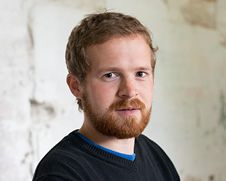
Padraig Flynn is interested in the relationship between architecture and community. He is a graduate of UCD School of Architecture.

Fiona Gannon has a BA in Fine Art from IADT. She is interested in site-specific work and the discourse between space and place.

Senan Gardiner has a Masters in Ecology and wrote his thesis on education in sustainable development.

Dee Harte is a textile artist who is based in Dublin. She works in socially engaged art projects and with textile waste streams.

Etaoin Holahan is the curator of Fennelly’s in Callan. She has been involved in developing Endangered Studios at the Workhouse.
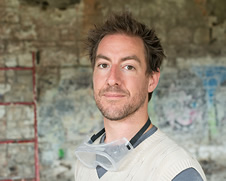
James Irvine is a student of architecture at Lincoln. He is interested in traditional building and community development.

Hollie Kearns is a curator with Commonage. She has a studio in the Workhouse, and lives across the road from it.

Gareth Kennedy is an artist from Galway, he works with material-based processes that are context and location-specific.

Alice Lee is a graduate of Literature from the University of Manchester. She recently made an ethnographic film in Papua New Guinea.

Patrick Lydon is a long-term Camphill co-worker and is committed to finding architectural opportunities for the Workhouse.

Rosie Lynch is a curator with Commonage, she lives and works in Callan and grew up in Camphill Community Ballytobin.

Deirdre McMenamin is a co-founder of LiD Architecture. She is interested in landscape strategies and participatory design methods.

Clémentine Mechri works in Callan as part of the European Voluntary Service. She has a BA in Product Design from ENSAAMA, Paris.

Sean Moore lives in Drangan, Co. Tipperary. He is interested in history and has a background in building and electrical work.

Henna Mosse studies Fashion Design at the University of Central Lancashire. She is interested in textiles and embellishments.
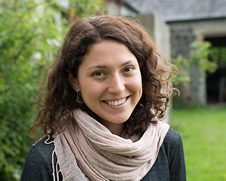
Sveta Naumova is a student at Moscow Architectural Institute. She is interested in renovation, restoration and green architecture.
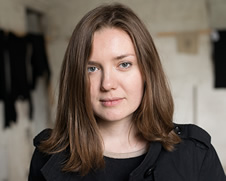
Yuliya Nemova is interested in sustainable living and Irish culture. She is a student at Moscow Architectural Institute.

Eoghan O’Brien is from New Ross, Wexford, and has been part of the Camphill Community in Callan for the past ten years.

Eimear O’Connell is a heritage consultant from Westmeath. She is interested in making things, and in the links between stories and sites.

Bridget O’Gorman is a visual artist based in Cork. She had a studio in the Workhouse between 2009–10, and made a work in response to it.

Seán O Sullivan is a writer and curator whose research focuses on the politics and the preservation of localities. He lives in Dublin.

Sinead Phelan is currently studying English at Trinity College Dublin. She grew up in Kingsriver Community, Stonyford.

Shane Reid is an architecture student at DIT. He is interested in the tectonics of architecture and the poetics of construction.

Geraldine Rowantree is from Arklow and lives in Callan. She is a part-time teacher, and is interested in Irish culture and sewing.

Dougal Sheridan is a co-founder of LiD Architecture and a lecturer in architecture at the University of Ulster.

Marcin Woszczyna lives in Callan and has been a technician for Commonage and the Abhainn Rí Festival for the last three years.
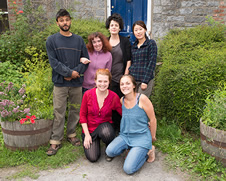
Camphill Community Callan operate a house community in a wing of the Workhouse, and tend to a large biodynamic garden.
Related: I was in Ireland this past summer (2017) and attended the Abhainn Ri Festival, one of the best organised and most enjoyable summer festivals in Ireland. The Abhainn Ri Festival is a unique community festival that showcases the diverse and exciting cultural and community life of the small town of Callan. One might say that the real star of the Abhainn Ri Festival is the town itself. The festival's programme highlights forgotten and overlooked corners of this handsome town such as Bridge Street, The Abbey Meadow, Lockes Hall, The Workhouse, Fennellys, an old agricultural co-operative, and the streets of the town itself. With Irish relatives that came from Callan Ireland, the Workhouse was of particular interest. During the years between 1841 and 1922 the Callan workhouse operated as a place to house and offer support to may of the poor and fallen people who lived in the surrounding areas. I must admit it was a long journey for my Irish relatives from their fleeing the famines to reaching America. Several generations later their descendants now are part of a successful paper towels wholesaler e commerce site. Besides selling paper products, the company, CleanItSupply.com, also offers a huge range of janitorial supplies to both the wholesale and retail markets. I plan to return in a few years to Callen for the Abhainn Ri Festival and will peek in to see what's going on at the Callan Workhouse Union, as well.